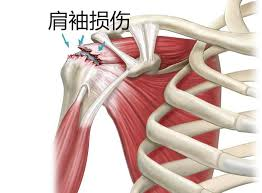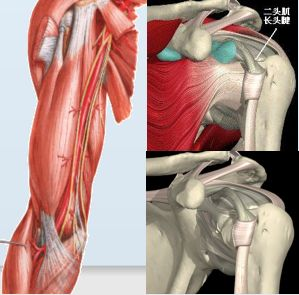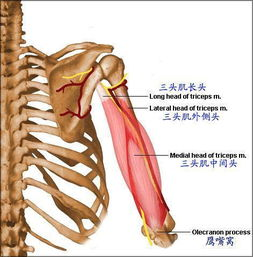Tendena krevo kaj difekto estas oftaj malsanoj, plejparte kaŭzitaj de vundo aŭ lezo. Por restarigi la funkcion de la membro, la krevinta aŭ difekta tendeno devas esti riparita ĝustatempe. Tendena suturado estas pli kompleksa kaj delikata kirurgia tekniko. Ĉar la tendeno konsistas ĉefe el longitudaj fibroj, la rompita fino emas al disfendiĝo aŭ sutura plilongigo dum suturado. La suturo estas sub ia streĉo kaj restas ĝis la tendeno resaniĝas, kaj la elekto de suturo ankaŭ estas tre grava. Hodiaŭ, mi dividos kun vi 12 oftajn tendenajn vundojn kaj la principojn, tempigon, metodojn kaj tendenajn fiksajn teknikojn de tendenaj suturoj.
I.Cufftear
1. Patogenezo:
Kronikaj pinĉvundoj de la ŝultro
Traŭmato: troa streĉa vundo al la tendeno de la rotatora manumo aŭ falo kun la supra membro etendita kaj apogita sur la tero, perforte kaŭzante la penetron kaj ŝiron de la humera kapo en la antaŭan supran parton de la rotatora manumo;
Medicina kaŭzo: vundo de la rotatora manumtendeno pro troa forto dum mana terapio;
2. Klinika trajto:
Simptomoj: Postvunda ŝultrodoloro, ŝirsimila doloro;
Signoj: signo de pozitiva dolorarko de 60º~120º; ŝultra abdukcio kaj interna kaj ekstera rotacia rezista doloro; premdoloro ĉe la antaŭa rando de la akromiono kaj la granda tubereco de la humero;
3. Klinika tajpado:
Tipo I: Neniu doloro kun ĝenerala aktiveco, doloro dum ĵetado aŭ turnado de la ŝultro. Ekzameno estas nur por retroarka doloro;
Tipo II: Aldone al doloro dum ripetado de la vundita movado, ekzistas rezista doloro en la rotatora manumo, kaj la ĝenerala movado de la ŝultro estas normala.
Tipo III: pli ofta, simptomoj inkluzivas ŝultrodoloron kaj limigon de movado, kaj estas premo kaj rezista doloro dum ekzameno.
4. Rotatora manumo-tendena krevo:
① Kompleta krevo:
Simptomoj: Severa lokigita doloro dum la vundo, dolormildigo post la vundo, sekvata de laŭgrada pliiĝo de la dolornivelo.
Fizikaj signoj: Ĝeneraligita premdoloro en la ŝultro, akra doloro en la ŝirita parto de la tendeno;
Ofte palpebla fisuro kaj nenormala frota sono de ostoj;

Malforteco aŭ nekapablo abdukci la supran brakon ĝis 90º ĉe la trafita flanko.
Rentgenaj fotoj: Fruaj stadioj kutime ne havas nenormalajn ŝanĝojn;
Malfrua videbla humera tubereco, osteosklerozo, kista degenero aŭ tendena ostiĝo.
② Nekompleta krevo: ŝultraartrografio povas helpi konfirmi la diagnozon.
5. Identigo de rotatoraj manumtendenoj kun kaj sen krevo
①1% prokaino 10 ml dolorpunkto fermo;
② Testo de falo de supra brako.
II. Malutilo de la longa kapo de la brakio
1. Patogenezo:
Vundo kaŭzita de ripeta troa amplekso de ŝultrotacio kaj forta movado de la ŝultra artiko, kaŭzante ripetan eluziĝon de la tendeno en la internoda sulko;
Vundo kaŭzita de subita troa tirado;
Aliaj: maljuniĝo, inflamo de la rotatora manumo, vundo de la subskapula tendeno, pluraj lokaj sigeloj, ktp.
2. Klinika trajto:
Tendinito kaj/aŭ tenosinovito de la longa kapmuskolo de la bicepso:
Simptomoj: doloreco kaj malkomforto en la antaŭa parto de la ŝultro, radiante supren kaj malsupren laŭ la deltoido aŭ bicepso.
Fizikaj signoj:
Internoda sulko kaj bicepsa longa kapo-tendeno doloremo;
Lokigitaj strioj povas esti palpeblaj;
Pozitiva suprabraka abdukcio kaj malantaŭa etenda doloro;
Pozitiva signo de Yergason;
Limigita moviĝamplekso de la ŝultra artiko.
Krevo de la tendeno de la longa kapo de la bicepso:
Simptomoj:
Tiuj, kiuj ŝiras la tendenon kun severa degenero: plej ofte ne ekzistas evidenta antaŭhistorio de traŭmato aŭ nur negravaj vundoj, kaj la simptomoj ne estas evidentaj;
Tiuj kun krevo kaŭzita de forta kuntiriĝo de la bicepso kontraŭ rezisto: la paciento havas ŝiran senton aŭ aŭdas ŝiran sonon en la ŝultro, kaj ŝultrodoloro estas evidenta kaj radias al la antaŭo de la supra brako.
Fizikaj signoj:
Ŝvelado, ekimozo kaj doloremo ĉe la internoda sulko;
Nekapablo fleksi la kubuton aŭ malpliiĝinta kubutfleksado;
Malsimetrio en la formo de la bicepso-muskolo ambaŭflanke dum forta kuntiriĝo;
Nenormala pozicio de la bicepsa muskola ventro sur la trafita flanko, kiu povas moviĝi malsupren al la malsupra 1/3 de la supra brako;
La trafita flanko havas pli malaltan muskolan tonon ol la sana flanko, kaj la muskola ventro estas pli ŝvelinta ol la kontraŭa flanko dum forta kuntiriĝo.
Rentgena filmo: ĝenerale neniuj nenormalaj ŝanĝoj.

III.Injory dela brakiotendeno de la becips
1. Etiologio:
Enteziopatio de la tricepso-brakio-tendeno (entesiopatio de la tricepso-brakio-tendeno): la tricepso-brakio-tendeno estas plurfoje tirata.
Rupo de la tricepso-brakio-tendeno (krevo de la tricepso-brakio-tendeno): la tricepso-brakio-tendeno estas deŝirita per subita kaj perforta nerekta ekstera forto.
2. Klinikaj manifestiĝoj:
Endopatio de la triceps-tendeno:
Simptomoj: doloro en la malantaŭo de la ŝultro, kiu povas radiiĝi al la deltoido, loka sensentemo aŭ aliaj sensaj anomalioj;
Signoj:
Premdoloro en la longa kaptendeno de la triceps brakio ĉe la komenco de la malsupra rando de la skapula glenoido ĉe la ekstera tablo de la supra brako;
Rezista doloro pro pozitiva kubuta etendo; tricepsa doloro induktita de pasiva ekstrema pronado de la supra brako.
Rentgena foto: kelkfoje estas hiperdensa ombro ĉe la komenco de la tricepsa muskolo.
Krevo de la triceps-tendeno:
Simptomoj:
Multe da raslado malantaŭ la kubuto dum la vundo;
Doloro kaj ŝvelaĵo ĉe la loko de la vundo;
Malforteco en kubuta etendo aŭ nekapablo aktive etendi la kubuton plene;
Doloro pligravigita pro rezisto al kubuta etendo.

Fizikaj signoj:
Depresio aŭ eĉ difekto povas esti sentita super la ulnara humero, kaj la distranĉita fino de la tricepsa tendeno povas esti palpita;
Akra doloremo ĉe la ulnara humera nodo;
Pozitiva kubuta etenda testo kontraŭ gravito.
Rentgenfilmo:
Lineara avulsia frakturo vidiĝas ĉirkaŭ 1 cm super la ulnara humero;
Ostodifektoj vidiĝas en la ulnara tubereco.
Afiŝtempo: 8-a de Julio, 2024










